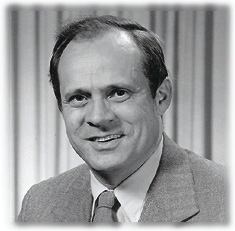Main Menu · Search ·Current Issue ·Contact ·Archives ·Centennial ·Letters to the Editor ·FAQs

the Loeb Fellowship. |
The panoply of Harvard fellowships for travel and study are among the least well known of the University's great resources. The Loeb Fellowship must be counted among those whose contributions vastly outweigh their public profile. Though modeled on the Nieman Fellowship for mid-career journalists, the Loeb program is unique in several respects. At its inception, curator Bill Doebele's consultations with the directors of the Nieman and Bunting Fellowships revealed that many of their applicants were people changing jobs. He surmised that young professionals moving up might worry that they could lose their position on the career ladder by taking a year off. That limited the pool, so Doebele decided to take both part-time fellows, who are flown in at the fellowship's expense for two days a week, as well as fellows who live in Cambridge full-time during their year of study. Part-timers keep their regular jobs, don't have to relocate their families, and frequently continue to earn their regular salary. Doebele also stipulated that fellows (who pay no tuition, room, or board) must return something to the Graduate School of Design (GSD)--by acting as career advisers, giving a seminar, or helping a professor in a studio or with research on a book. "This enriches the GSD with their experience," Doebele says. "And, when you are teaching, you learn more than any student." Doebele is also proud that there has been at least one minority member of each 10- to 12- member "class" (this year, four of the 11-member class are minorities), a commitment that predates affirmative action.
In fulfilling its central purpose--to increase the capacity of designers to influence policy--the Loeb Fellowship has had considerable success. Former fellows are prominent in government, architecture, development, journalism, and many other fields. They range from filmmaker Henry Hampton (Eyes on the Prize, America's War on Poverty) to major developers like Anthony Pangaro of Macomber Development Associates, to Adele Chatfield-Taylor, president of the American Academy in Rome (a fellowship program in the arts and humanities encompassing not only architecture but also conservation, music, literature, classics, and Italian studies). Loeb Fellow John de Monchaux went on to serve as dean of MIT's school of architecture and planning; Armando Carbonell is executive director of the Cape Cod Commission; and Justine Liff is commissioner of Boston's Parks and Recreation Department. Occasionally the fellowship year bears unexpected fruits, as in the case of Felice Frankel, LF '92, who entered as a landscape photographer and left with a passion for imaging things scientific (see "Pheneomenal Surfaces," July-August 1997, page 41). Doebele describes her talent as "a donation to another field." The ranks of Loeb Fellows include Vivian Fei Tsen, LF '88, who manages seven and a half miles of San Francisco port's waterfront, and Richard Green, LF '79, who presides over Stubbins Associates, an internationally known architectural firm. Richard Reinhard, LF '96, directs the private effort to rebuild Niagara Falls, New York, and Terrence Moore, LF '75, manages the New Jersey pinelands. Timothy Whalen, LF '95, who participated in the planning and construction of the $1-billion Getty Center complex in Los Angeles; Robert Peck, LF '78, manager of $2-billion worth of federal buildings; and Michael Adlerstein, LF '86, chief of urban projects for the National Park Service's North Atlantic Region, are all former Loeb Fellows.